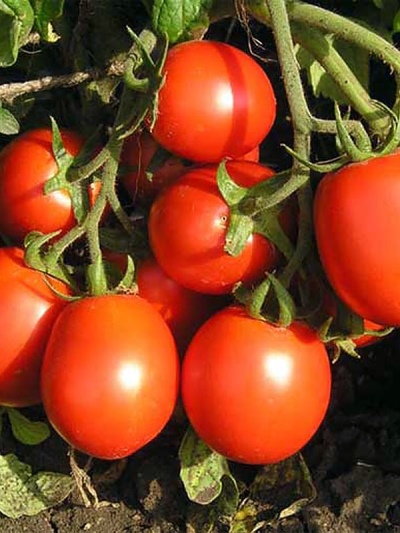
- Authors: Russia
- Name synonyms: Barnaul Canning
- Category: grade
- Growth type: determinant
- Appointment: fresh consumption, for pickling and preserving
- Ripening period: early
- Ripening time, days: 95-100
- Growing conditions: for open ground
- Bush size: undersized
- Bush height, cm: 40
Russian varieties of tomatoes ideally meet the requirements of the domestic climate and are well suited for gardeners. Barnaul canned tomato is one of such options. However, that is why it is necessary to carefully study its features and nuances.
Breeding history
The plant was developed by Altai breeders. Therefore, it was initially adapted to the harsh conditions of the West Siberian climate and to growing in the Urals.
Description of the variety
It has an alternative name - Barnaul Canning. Such a tomato is a determinant crop. Low-growing bushes rise up to a maximum of 40 cm.
The main qualities of the fruit
The use of berries of the Barnaul cannery is quite possible fresh. They can also be preserved or salted. When ripe, the fruit takes on an orange-red color. Its mass ranges from 40 to 50 g. In shape, the tomatoes resemble an elongated oval; fleshy flesh is hidden under the dense skin.
Taste characteristics
Barnaul canning is considered a fairly sweet tomato.
Ripening and fruiting
Early Barnaul cannery will ripen in 95-100 days. But before that, the greens must have time to hatch. Therefore, the use of seedlings is strictly necessary.
Yield
The collection can be from 3 to 6 kg per 1 sq. m. The exact figure depends on the actual weather and agricultural skills of gardeners. The berries will form within 60 days. From 5 to 10 fruits are formed on 1 bush.
The timing of planting seedlings and planting in the ground
Sowing seeds is carried out 2 months before the expected time of transplanting into the ground. After the formation of 1-2 adult leaves, a dive must be performed. Since the seedlings can stretch a lot, it is better to choose large containers right away. Each bush is ideally planted in a separate pot. Noticing the closing of the foliage, the pots must be immediately pushed apart.
Sometimes it is impossible to avoid pulling out the seedlings. In this case, the transplant is carried out in a horizontal way. Longitudinally (in relation to the bed), they dig a ditch about 20 cm deep. Tomato seedlings should be positioned so that their tops are facing north. The groove must be covered with earth, but the upper parts must be raised above the surface by 15-20 cm.

Growing tomato seedlings is an extremely important process, because it largely depends on whether the gardener will be able to harvest at all. All aspects must be taken into account, from seedbed preparation to planting in the ground.
Landing scheme
The traditional approach - 60x40 cm - is undesirable for this variety. It is more correct to adhere to the 70x30 cm scheme. It is she who best helps to reveal the possibilities of the tomato. By the time of transplantation into open soil, sometimes flower brushes or even ovaries have already appeared. All this must be removed.

Growing and care
There is no need to grow up and shape this culture. Sometimes sowing is practiced directly into the ground, without seedlings. In this case, it is required to use a film cover in a well-equipped area. Whether to use growth stimulants, each gardener must decide for himself. Good predecessors are:
carrot;
cabbage;
garden greens.




A plant needs different micronutrients at each stage of growth. All fertilizers can be divided into two groups: mineral and organic. Folk remedies are often used: iodine, yeast, bird droppings, eggshells.
It is important to observe the rate and period of feeding. This also applies to folk remedies and organic fertilizers.


Resistant to adverse weather conditions
The culture can tolerate quite a lot of refrigeration. But to abuse this ability of her is hardly justified. Critically lowering the temperature to 11 degrees or less. Important: the plant can also tolerate the effects of a large number of diseases and pests.
Review overview
Even those who accidentally buy planting material of this variety will not be disappointed. The bushes are small, but tying is still required. The berries are dense and even, their shape is perfectly matched. The disease resistance claims of the planting material suppliers are fully supported by the experience of gardeners. The number of fruits is quite large, and their quality does not disappoint either.

























































































